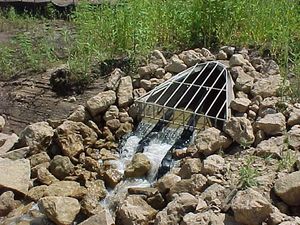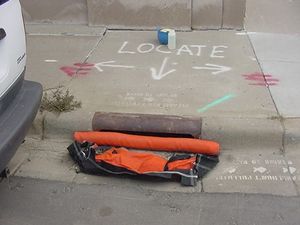
Difference between revisions of "Sediment control practices"
m |
m |
||
| Line 17: | Line 17: | ||
*[[Sediment control practices - Perimeter controls for disturbed areas]] | *[[Sediment control practices - Perimeter controls for disturbed areas]] | ||
*[[Sediment control practices - Check dams (ditch checks, ditch dikes)]] | *[[Sediment control practices - Check dams (ditch checks, ditch dikes)]] | ||
| − | *[[Sediment control practices - | + | *[[Sediment control practices - Diversion barrier controls (cofferdams/temporary dikes)]] |
*[[Sediment control practices - Storm drain inlet protection]] | *[[Sediment control practices - Storm drain inlet protection]] | ||
*[[Sediment control practices - Outlet energy dissipation]] | *[[Sediment control practices - Outlet energy dissipation]] | ||
Revision as of 13:35, 21 October 2016
This site is currently undergoing revision. For more information, open this link.
This page is under development. We anticipate populating it in autumn, 2016.
This page is under development. We anticipate populating it in autumn, 2016.
Erosion is the process by which soil, rock, or other material is moved from one location to another, typically through the action of water or wind. Sediment control practices are designed to prevent or minimize loss of eroded soil at a site. Typical sediment control practices focus on the following.
- Physical filtration of sediment by trapping soil particles as water passes through a silt fence, drop inlet screen, fiber roll, etc.
- Settling processes, that allow sediment to fall out of flows that are slowed and temporarily impounded in ponds, traps, or in small pools created by berms, silt fencing, inlet protection dikes, check dams, and so on
This page provides links to several pages in this manual that address sediment control at construction stormwater sites, as well as links to other pages and information related to erosion prevention practices.
Sediment control practices
- Sediment control practices - Vehicle tracking BMPs
- Sediment control practices - Perimeter controls for disturbed areas
- Sediment control practices - Check dams (ditch checks, ditch dikes)
- Sediment control practices - Diversion barrier controls (cofferdams/temporary dikes)
- Sediment control practices - Storm drain inlet protection
- Sediment control practices - Outlet energy dissipation
Photo galleries
Links
- Main construction stormwater page
- General principles for erosion prevention and sediment control at construction sites in Minnesota
Permit applicability
Warning: The Construction Stormwater General permit states "The Permittee(s) must stabilize all exposed soil areas (including stockpiles)." For more specific information, see Part IV.B.2 of the permit.

